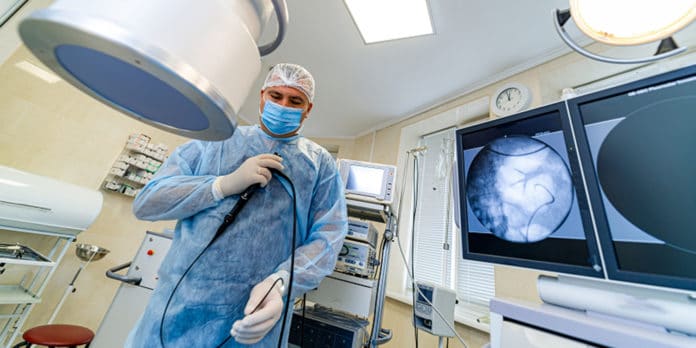T-rays or terahertz radiation, the electromagnetic radiation region between 0.1 THz and 10 THz in the frequency range, has lower energy levels than X-rays and is less damaging to biological tissue.
Considering its safeness, scientists have investigated that T-rays could be used to image and treat patients with skin or bowel cancer. What’s more, they have taken a step forward toward developing a treatment based on t-rays.
Scientists from the University of Leeds and Leeds Teaching Hospitals NHS Trust, along with the Universities of Warwick and Exeter and University Hospitals of Coventry and Warwickshire, developed a new imaging and treatment equipment generation based on T-rays a technology called terabotics. The work has received £8 million as a fund from the Engineering and Physical Sciences Research Council.
In this project, scientists will create miniature T-ray probes to image the skin and examine the bowel and colon. Once it reaches the tissues, it can determine the changes in tissues caused by cancer.
It is hoped to link the T-ray probes to an artificial intelligence system that would instantly tell healthcare staff if a cancerous lesion has been identified.
In later phases, the T-ray probes will be integrated with surgical robots. Scientists at the University of Leeds will be developing these robots.
When combined with the T-ray sensors, scientists hope that the robots will empower healthcare staff to recognize harmful changes to the cells without taking a biopsy, which postpones therapy. They would have the option to plan the degree of the harmful or pre-cancerous cells and eliminate them, there and afterward.
Pietro Valdastri, Professor of Robotics and Autonomous Systems in the School of Electronic and Electrical Engineering at Leeds, said: “Robotics is increasingly used in the operating theatre as it brings superior accuracy and unloads some of the burden of the procedure from the surgeon.”
“At Leeds, we are developing the next generation of surgical robots to detect colorectal cancer earlier and remove it more effectively.”
“Adding T-ray perception capabilities to our robots is a new exciting avenue of research that has the potential to improve cancer patient quality of life in the next five to 10 years.”
Professor Emma Pickwell-MacPherson, from the University of Warwick’s Department of Physics, who is leading the terabotics project, said: “Somebody might already be diagnosed with cancer, but the actual extent of that cancer is often not known until surgery starts.”
“In skin cancer patients, the terahertz probe will image the visible tumor and the surrounding area to determine better the extent of the tumor that is beneath the surface. This will enable the whole tumor to be removed in one go rather than incrementally. In turn, this enables better skin graft planning and speeds up the procedure.”
EPSRC Executive Chair Professor Dame Lynn Gladden said: “Technologies and approaches pioneered by UK researchers have the potential to revolutionize treatment for a wide range of conditions, from bowel cancer to diabetes.”
“The projects announced today exemplify this potential and may play a key role in improving the lives of millions of people.”
